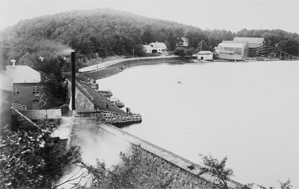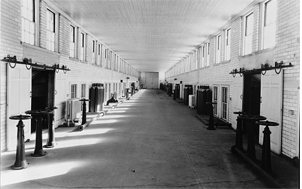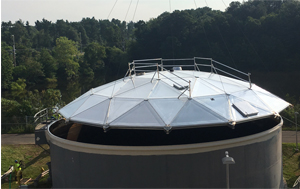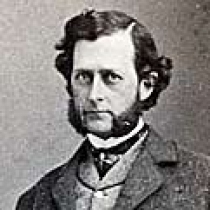When New Haven was settled in 1638, the first colonists depended on rivers and shallow, hand dug wells for water. By 1849, with the expansion of business and the need for fire protection, it became obvious these sources were not adequate or reliable for water supply. A group of prominent citizens approached the Connecticut legislature and received a charter to form the New Haven Water Company (NHWC) to supply the City of New Haven with pure water for public and domestic use. After years of trying to raise money for this new system, people turned to Eli Whitney II to assist with building a waterworks.

In 1859, Whitney began construction of a dam that backed up the Mill River for miles and formed a reservoir, appropriately named Lake Whitney. Distribution of water to the residents of New Haven began on January 1, 1862. For the next 40 years, the NHWC pumped water directly from its reservoirs to the city’s homes and businesses. In 1901, over 400 people in New Haven came down with typhoid fever.
As the city grew into a metropolitan region, the NHWC added to its sources to provide the area with water for the rest of the century. Lake Gaillard in North Branford took five years to complete, and the water company continued to expand its system. The NHWC laid new pipeline and acquired smaller companies, keeping pace with New Haven’s growing suburbs. The company also continued to purchase land to protect the drinking water watersheds. By 1970, the NHWC owned 25,000 acres of land in 17 South Central Connecticut towns.


To meet the requirements of the Safe Drinking Water Act passed in 1974, the NHWC had to build water filtration plants. To finance these plants, the company was faced with selling off its real estate or raising water rates. The company opted to sell land. Because of objections from surrounding communities, the state legislature created a commission which recommended the formation of a publicly owned regional water company. In 1977, the legislature passed enabling legislation created the South Central Connecticut Regional Water Authority (RWA); the RWA purchased the assets of the NHWC in 1980, and the rest is history.
When New Haven was settled in 1638, the first colonists depended on rivers and shallow, hand dug wells for water. By 1849, with the expansion of business and the need for fire protection, it became obvious these sources were not adequate or reliable for water supply. A group of prominent citizens approached the Connecticut legislature and received a charter to form the New Haven Water Company (NHWC) to supply the City of New Haven with pure water for public and domestic use. After years of trying to raise money for this new system, people turned to Eli Whitney II to assist with building a waterworks.
In 1859, Whitney began construction of a dam that backed up the Mill River for miles and formed a reservoir, appropriately named Lake Whitney. Distribution of water to the residents of New Haven began on January 1, 1862. For the next 40 years, the NHWC pumped water directly from its reservoirs to the city’s homes and businesses. In 1901, over 400 people in New Haven came down with typhoid fever.


As the city grew into a metropolitan region, the NHWC added to its sources to provide the area with water for the rest of the century. Lake Gaillard in North Branford took five years to complete, and the water company continued to expand its system. The NHWC laid new pipeline and acquired smaller companies, keeping pace with New Haven’s growing suburbs. The company also continued to purchase land to protect the drinking water watersheds. By 1970, the NHWC owned 25,000 acres of land in 17 South Central Connecticut towns.
To meet the requirements of the Safe Drinking Water Act passed in 1974, the NHWC had to build water filtration plants. To finance these plants, the company was faced with selling off its real estate or raising water rates. The company opted to sell land. Because of objections from surrounding communities, the state legislature created a commission which recommended the formation of a publicly owned regional water company. In 1977, the legislature passed enabling legislation created the South Central Connecticut Regional Water Authority (RWA); the RWA purchased the assets of the NHWC in 1980, and the rest is history.





